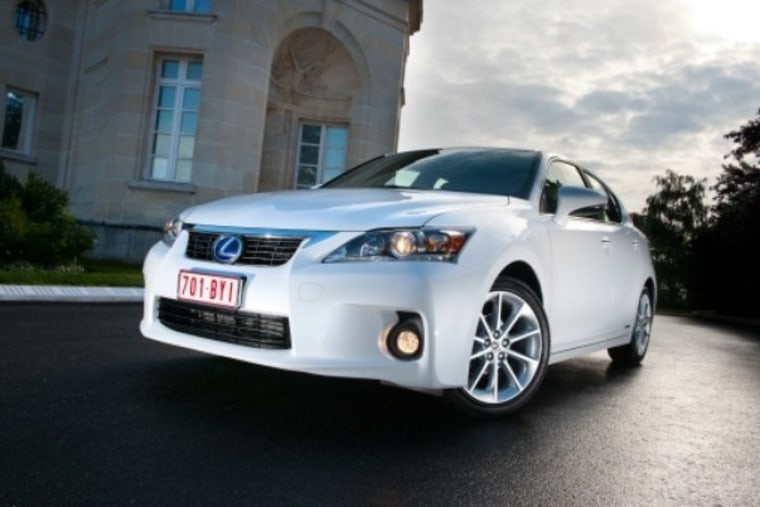The good news is that traffic fatalities are at historic lows, thanks in large part to increasingly sophisticated auto designs, advanced safety features and stricter seatbelt and DUI laws. The bad news is auto crashes still accounted for 32,788 deaths in 2010, according to the National Highway Traffic Safety Administration, which means a vehicle-related fatality occurs an average of once every 16 minutes. Motor vehicle collisions remain the leading cause of death for individuals between the ages of three and 34.
Choosing the safest auto available is particularly important when shopping for a small car, where every advantage is essential. That’s because the laws of physics dictate that, all else being equal, a smaller and lighter vehicle will tend to fare worse in a crash than will a larger and heavier model. Buying the most massive model on a dealer’s lot is not an option for many motorists, whether they’re cash-strapped, are looking for a more fuel-efficient vehicle to save money at the pump or have modest needs and prefer to drive a smaller car. Compact and subcompact cars are on pace to outsell midsize entries for the first time in nearly two decades according to sales projections from J.D. Power and Associates.
Trying to project which of the burgeoning selection of otherwise excellent small cars on the market will do the best job of protecting its occupants in a crash – and perhaps even help prevent a collision altogether – is no easy task.
Forbes.com slideshow: Complete list of safest small cars
We started out by consulting the 2012 model-year list of “Top Safety Picks” from the Insurance Institute for Highway Safety, a non-profit organization funded by the insurance industry. These included a record 31 mid-priced and luxury small cars. “For the second year running a record number of models qualify as Top Safety Picks,” says IIHS president Adrian Lund. “It’s tough to win, and we commend auto manufacturers for making safety a top priority.”
To qualify, a car must garner top scores across the board for performance in front, side, rollover, and rear-end crashes based on ratings determined by the IIHS’ evaluations. Vehicles are rated in each category on a basis of “good,” “acceptable,” “marginal” or “poor” performance.
For testing a car’s crashworthiness in a frontal collision, the IIHS performs “offset barrier” tests at 40 mph, using average-size male test dummies. Here, only part of a vehicle’s front end hits a deformable barrier, which simulates the front of another vehicle. This test is said to provide a good indication of how well a vehicle’s structure will be maintained in a crash to protect its occupants, particularly against injuries to the lower extremities.
Forbes.com: Car brands offering the deepest discounts
The IIHS’ side-impact test approximates the front end of a full-size pickup truck or SUV striking the passenger’s side of a vehicle at 31 mph. The potential for injuries are measured using smaller dummies because IIHS data suggests that women are more likely than men to suffer serious head injuries in a side impact collision.
Rollover protection ratings are based on roof crush tests. To earn a “Good” rating here, a vehicle’s roof must be able to withstand a force of four times its own weight before reaching five inches of crush depth. The IIHS estimates that such roofs reduce the risk of serious and fatal injury in single-vehicle rollovers by about 50 percent compared with those that merely meet the federal minimum requirement for crush resistance.
While deaths from rear-end crashes are relatively low they’re one of the most common causes for whiplash-type neck injuries, which result from the sudden jerking forward of an occupant’s head and torso. The IIHS simulates rear-end collisions using a combination of static measurements and active crash-dummy testing to determine how well the vehicles’ seats and head rests support their occupants in a rear-end collision at 20 mph.
Forbes.com: The cars facebook’s new millionaires should buy
We further winnowed down the number of choices to the 10 models on our Safest Small Cars list by identifying the models that offer the most safety features to both help protect their occupants in a crash and help their drivers steer clear of collisions in the first place.
All cars are required to include airbags that inflate automatically and instantaneously to help protect front-seat occupants’ heads and chests in a frontal crash. What’s more, all the cars in our list include both chest-protecting seat-mounted side-impact airbags for front passengers and head-protecting side-curtain airbags that extend to outboard riders in both rows of seats. Many of the models in our list further include knee-height airbags that are designed to help reduce leg injuries for front seat occupants.
Forbes.com slideshow: Complete list of safest small cars
Forbes.com: The best cars for commuters 2012
Forbes.com: The safest cars for 2012
Forbes.com: 10 cars to trade-in now for maximum return
